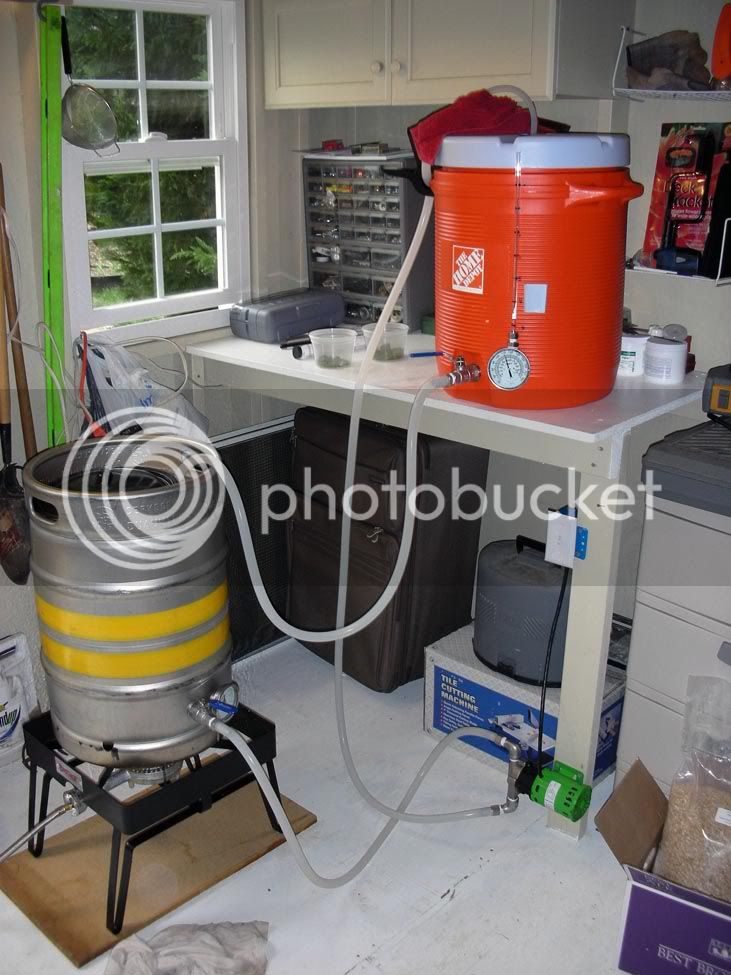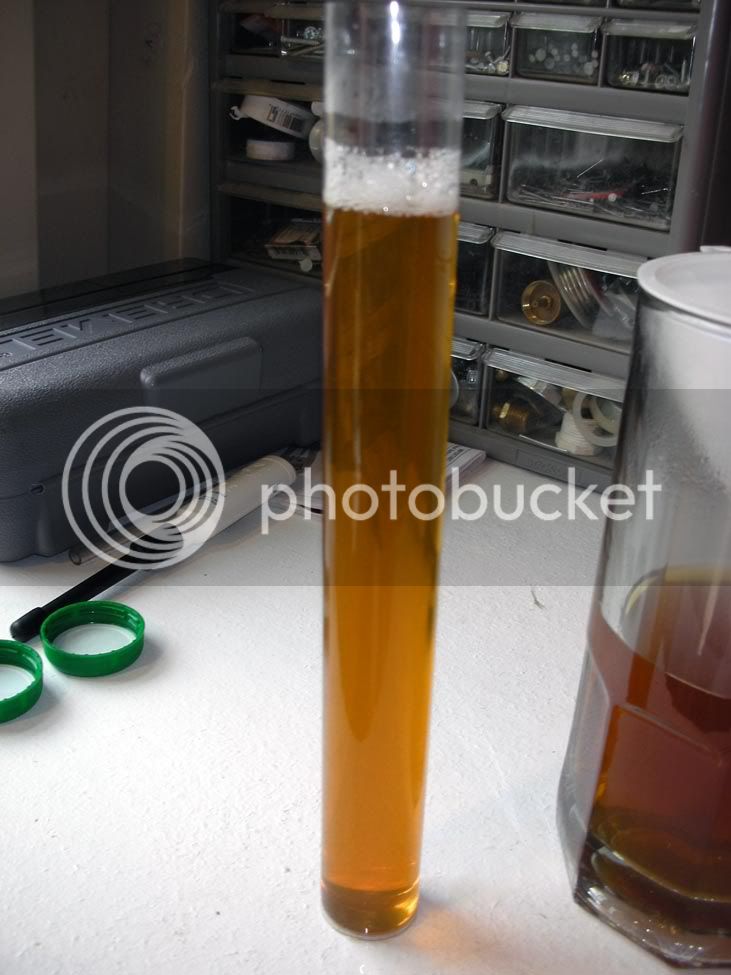Recirc tube is pretty nice, certainly much better than the jet of water I used. THe bucket lid things sounds like a pretty good idea as well. Seems to me though that the mash cools more along the edges than the middle, so if there was a way to distribute it to the edges that would be best. I was thinking of bending some of my copper tubing to form a ring around the edge of the mash tun to distribute the recirculation water there. Can't figure out though how to make it stay just below the surface for different sized batches-- maybe attach some floating mechanism?
Here are the two options I considered. This 1st option seems to be more like what people are suggesting here. I chose the second option mostly for convenience and not have to clean as many tubes, as well as not having to constantly watch the water level in the grant.
I wanted to recirc mainly to prevent scorching and even out the temperature, but also to make a nice clear wort. I am trying to work only with what i have because the wife will go apoplectic if I buy another large thing to stick in the house. If I were to stick with option 2 for convenience sake, will slowing the recirculation allow too much heat buildup? It is a pretty low flame to keep the temp just right, although I do crank it to high for mashout. It is nice to know that the OP has used this procedure without that grant with success.
Also, the last batch I did was NOT no sparge, but the no sparge thing appeals to me in so many ways, and fits my mash tun much better, as it holds 2.6 gallons before water hits the underside of the false bottom. Here is what I mean:
The grain bed ends above the water level at normal mash volumes of 1.25 qts/lb. I bought a mash tun that was just too damn big for me! This is why no sparge is just so damn appealing.
I also put together a spreadsheet for no sparge, single sparge and double sparge efficiency which includes dead space calculations if anyone is interested. Of course, you can probably get much higher efficiency with no sparge if you do BIAB and squeeze the bag at the end... efficiency for no sparge is essentially inversely proportional to the amount of wort that is taken up by the grain. If you could squeze it completely dry you would get basically 100% efficiency.
http://files.me.com/kshuler/zcq768



